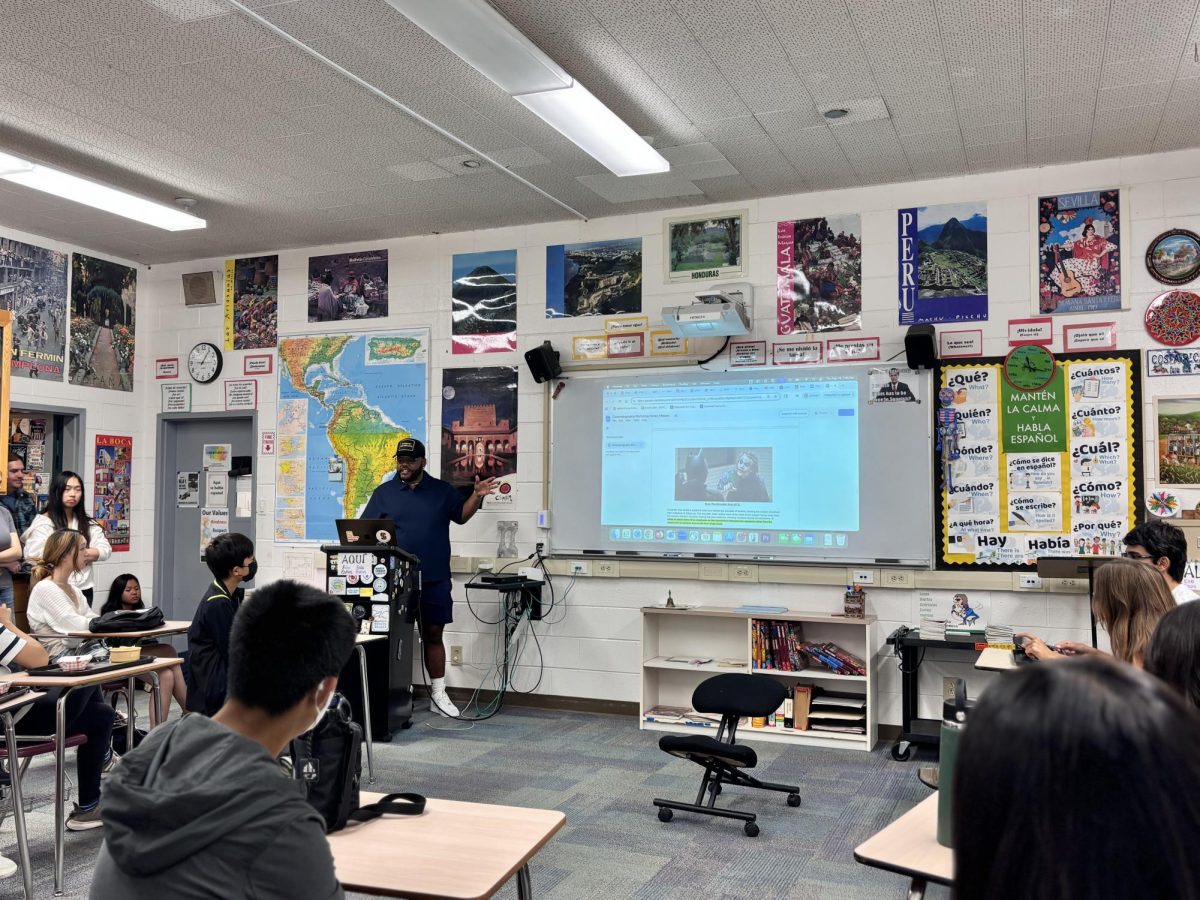Humans of Harker: Emily Chen distinguishes between art and reality
January 13, 2018
The jigsaw puzzle of life consists of an infinite number of pieces packaged in a box with no image to guide whoever attempts to complete it. But Emily Chen (12) intends to solve it anyways. Through the avenues of social interaction and silent contemplation, Emily hopes to gain an absolute understanding of the people in her community—and discover where she belongs in the big picture.
“It’s important to be reflective on who you are, how you communicate with others and what there’s left in the world for you to accomplish. By doing so, I started to suffuse actions that were meant to be pointless or of nominal significance with meaning,” she said. “I thought that I was peering into someone else’s mind by taking their words and trying to fit them to their character and to their motives. But in actuality, I was just looking into a mirror—a very distorted mirror—of my own thoughts and expectations.”
Equipped with her WiSTEM sweatshirt, neat ponytail and observant eye, Emily seeks knowledge about her surroundings from the individuals around her. But to hear the stories of those she may never meet, Emily turns to the big screen. As doorways to others’ perspectives, movies offer Emily a chance to vicariously experience the joys, sorrows and trials life has in store for her and guide her idea of how she wants to navigate through the situations their characters face when she encounters them.
“One of my favorite quotes from a film I like a lot pretty much runs along the lines of ‘ever since film was conceived, humans have lived three times as long.’ Films, because of the short duration they have to last, take up twice as much meaning as an ordinary life,” she said. “With our ability to interact with film characters, we’re able to learn lessons in the matter of two to three hours that would otherwise take a lifetime to understand.”
Emily’s love of film originated from her mother, who used movies to foster an awareness of moral values in Emily early in her childhood. Years later, Emily still cites Roberto Benigni’s “Life is Beautiful” and Edward Yang’s “Yi Yi” as the films which have most impacted the way she views her relationships.
“Film has taught me the importance of taking care to suffuse my actions with meaning and to not try and embroil myself in conflicts or issues that don’t necessarily have a larger purpose,” she said. “In that way, I’ve let my life become more direct and guided, and I’ve been able to view myself through a more critical lens.”
When it came time to submit her Mitra research proposal, Emily’s “lightbulb moment” was the instant she considered focusing on film. For her paper, she studies fifth-generation Chinese films, examining their creative elements in context of their directors’ lives.
“Emily looks at social history and interpersonal history with a level of seriousness and complexity that is unusual for someone who is a teenager. Most of us gain interpersonal and social complexity through personal experience; we lose things we love, we get into serious emotional relations, things work out, sometimes they don’t,” her research mentor and former AP U.S. History teacher Damon Halback said. “Others are able to empathize forward and imagine what it would be like in the future and in different scenarios and are able to inform their perspectives today. That’s a very unusual characteristic, and it’s something Emily possesses.”
To Mona Lee (12), one of her best friends, Emily transcends the stereotypical adolescent profile in maturity and self-awareness.
“One of the biggest things about Emily is that she’s not afraid of being who she wants to be,” Mona said. “That’s just the person she is; she’s very independent and self-sufficient, and she has very clear values she’s not afraid to hold herself to. In my opinion, that’s something very commendable about her that makes her different from the average 17-year-old.”
With so much of the world left to explore, Emily remains a long ways from finishing life’s puzzle—but she never plans to stop looking for her own piece.
“The point behind my constant analysis is to try and understand my surroundings. This process has changed the way I interact with people, and it has made me realize that in order to understand the world better, I need to be able to separate myself from that world,” she said. “High school has been an obvious period of growth for everyone, but I think my biggest takeaway from it has been that I need to draw a clear line between art and reality.”


















![“[Building nerf blasters] became this outlet of creativity for me that hasn't been matched by anything else. The process [of] making a build complete to your desire is such a painstakingly difficult process, but I've had to learn from [the skills needed from] soldering to proper painting. There's so many different options for everything, if you think about it, it exists. The best part is [that] if it doesn't exist, you can build it yourself," Ishaan Parate said.](https://harkeraquila.com/wp-content/uploads/2022/08/DSC_8149-900x604.jpg)




![“When I came into high school, I was ready to be a follower. But DECA was a game changer for me. It helped me overcome my fear of public speaking, and it's played such a major role in who I've become today. To be able to successfully lead a chapter of 150 students, an officer team and be one of the upperclassmen I once really admired is something I'm [really] proud of,” Anvitha Tummala ('21) said.](https://harkeraquila.com/wp-content/uploads/2021/07/Screen-Shot-2021-07-25-at-9.50.05-AM-900x594.png)







![“I think getting up in the morning and having a sense of purpose [is exciting]. I think without a certain amount of drive, life is kind of obsolete and mundane, and I think having that every single day is what makes each day unique and kind of makes life exciting,” Neymika Jain (12) said.](https://harkeraquila.com/wp-content/uploads/2017/06/Screen-Shot-2017-06-03-at-4.54.16-PM.png)








![“My slogan is ‘slow feet, don’t eat, and I’m hungry.’ You need to run fast to get where you are–you aren't going to get those championships if you aren't fast,” Angel Cervantes (12) said. “I want to do well in school on my tests and in track and win championships for my team. I live by that, [and] I can do that anywhere: in the classroom or on the field.”](https://harkeraquila.com/wp-content/uploads/2018/06/DSC5146-900x601.jpg)
![“[Volleyball has] taught me how to fall correctly, and another thing it taught is that you don’t have to be the best at something to be good at it. If you just hit the ball in a smart way, then it still scores points and you’re good at it. You could be a background player and still make a much bigger impact on the team than you would think,” Anya Gert (’20) said.](https://harkeraquila.com/wp-content/uploads/2020/06/AnnaGert_JinTuan_HoHPhotoEdited-600x900.jpeg)

![“I'm not nearly there yet, but [my confidence has] definitely been getting better since I was pretty shy and timid coming into Harker my freshman year. I know that there's a lot of people that are really confident in what they do, and I really admire them. Everyone's so driven and that has really pushed me to kind of try to find my own place in high school and be more confident,” Alyssa Huang (’20) said.](https://harkeraquila.com/wp-content/uploads/2020/06/AlyssaHuang_EmilyChen_HoHPhoto-900x749.jpeg)









